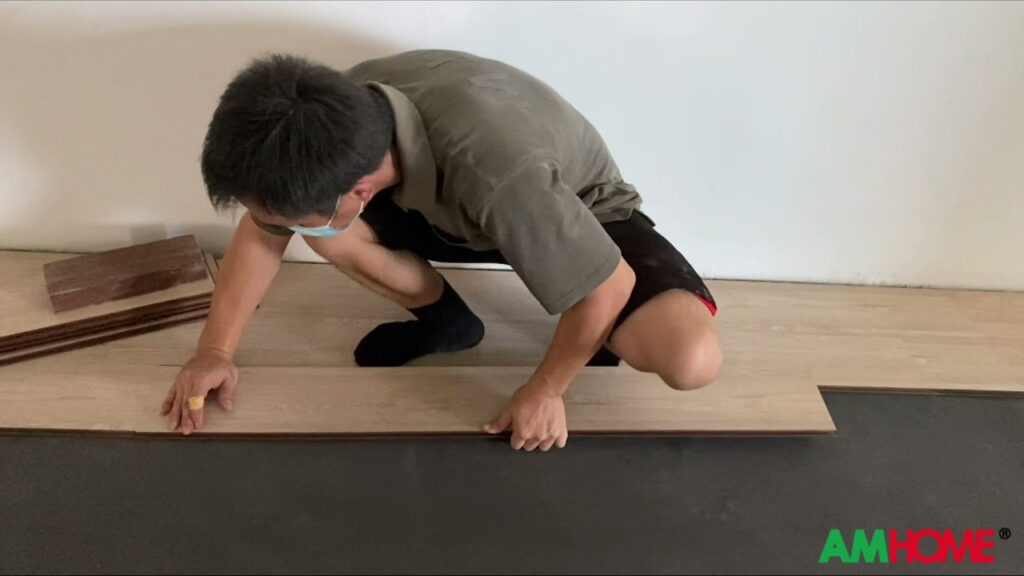1. Understanding the Pros and Cons of Vinyl Flooring
Pros of Vinyl Flooring
- Durable: Vinyl flooring is extremely durable and can withstand heavy foot traffic, making it ideal for high-traffic areas.
- Water-Resistant: Vinyl is impervious to water, making it suitable for kitchens, bathrooms, and basements.
- Easy Maintenance: Vinyl flooring is easy to clean and requires minimal maintenance, making it a convenient option for busy households.
- Variety of Styles: With a wide range of colors and patterns available, vinyl flooring offers versatility in design options.
Cons of Vinyl Flooring
- Prone to Damage: Although durable, vinyl flooring can be susceptible to cuts, tears, and scratches from sharp objects.
- Not Eco-Friendly: Vinyl is a synthetic material and is not biodegradable, posing environmental concerns.
- Not Suitable for High-Temperature Areas: Vinyl flooring may not be suitable for areas with extreme temperatures, such as sunrooms or spaces with underfloor heating.
- Potential for VOC Emissions: Some vinyl flooring products may emit volatile organic compounds (VOCs), which can impact indoor air quality.
When considering vinyl flooring for your home or commercial space, it’s important to weigh the pros and cons to make an informed decision that aligns with your needs and preferences.
2. The Benefits and Drawbacks of Tiles as Flooring Option
When it comes to choosing flooring options for your home, tiles have become a popular choice for many homeowners. There are several advantages to using tiles as a flooring option. Firstly, tiles are incredibly durable and long-lasting, making them a great investment for high-traffic areas in the home. Additionally, they are easy to clean and maintain, requiring minimal effort to keep them looking fresh and new. The wide range of styles, colors, and patterns available in tiles allow for endless design possibilities, making it easy to find the perfect fit for any aesthetic preference.
Despite their many benefits, it’s important to consider some drawbacks of using tiles as a flooring option. One of the main drawbacks is that tiles can be cold and hard underfoot, which may not be as comfortable as other flooring options, especially in areas where people tend to stand for extended periods. Additionally, the installation process for tiles can be labor-intensive and may require professional help, adding to the overall cost of the project. Lastly, tiles can be prone to chipping or cracking if heavy objects are dropped on them, requiring potential repairs in the future.
In conclusion, tiles offer a range of benefits such as durability, ease of maintenance, and a variety of design options, but they also come with drawbacks including potential discomfort, installation costs, and susceptibility to damage. It’s important to weigh these factors and consider your specific needs and lifestyle before choosing tiles as a flooring option for your home.
3. Durability and Longevity: Vinyl Flooring vs. Tiles
When it comes to choosing between vinyl flooring and traditional tiles, durability and longevity are essential factors to consider. Both options offer distinct advantages in terms of withstanding daily wear and tear. Vinyl flooring is renowned for its resilience against scratches, dents, and stains, making it a reliable choice for high-traffic areas such as kitchens and bathrooms. Its ability to maintain its original appearance over time is a testament to its durability.
On the other hand, tiles are also known for their long-lasting nature. Whether ceramic, porcelain, or natural stone, tiles are appreciated for their robustness and resistance to moisture. Their ability to endure heavy foot traffic and resist damage from moisture and spills makes them a popular option for both residential and commercial settings.
In evaluating the longevity of both vinyl flooring and tiles, it’s important to consider factors such as maintenance and proper installation. Choosing the right underlayment and adhering to manufacturer recommendations can significantly impact the lifespan of both flooring options. Additionally, regular cleaning and maintenance routines can contribute to preserving the integrity of either vinyl or tile flooring. Making an informed decision about which option aligns best with your lifestyle and maintenance preferences is crucial in ensuring long-term satisfaction with your flooring choice.
4. Cost Analysis: Which is More Budget-Friendly – Vinyl Flooring or Tiles?
When it comes to choosing between vinyl flooring and tiles, cost analysis plays a crucial role in decision-making. Both options have their pros and cons, but ultimately, the budget-friendliness of the materials can significantly impact the final choice. To determine which option is more cost-effective, it’s essential to carefully consider various factors, including initial installation expenses, long-term maintenance costs, and the overall durability of the materials.
While tiles often offer a wide range of styles and designs, they tend to be more expensive to install compared to vinyl flooring. Additionally, the cost of labor for tile installation can be higher due to the meticulous nature of the process. On the other hand, vinyl flooring is known for its affordability and relatively straightforward installation, making it an attractive option for budget-conscious homeowners.
Furthermore, long-term maintenance costs should be taken into account when comparing the budget-friendliness of vinyl flooring and tiles. While tiles may require more frequent maintenance and occasional replacement of individual pieces, vinyl flooring is generally more durable and resistant to wear and tear, potentially reducing long-term maintenance expenses.
In conclusion, a comprehensive cost analysis is crucial when deciding between vinyl flooring and tiles. By carefully evaluating the initial installation expenses, long-term maintenance costs, and overall durability, homeowners can make an informed decision based on their budget and specific needs.
5. Final Verdict: Choosing the Right Flooring Option for Your Space
When it comes to choosing the right flooring option for your space, it’s crucial to consider various factors that will ultimately impact the functionality, aesthetic appeal, and longevity of your investment. The final verdict on the best flooring option will largely depend on your specific needs and preferences. From hardwood and laminate to carpet and tile, each type of flooring has its advantages and disadvantages.
Firstly, consider the level of foot traffic in the area. For high-traffic spaces like entryways and living rooms, durable options such as hardwood or laminate may be ideal. On the other hand, for areas where comfort is key, such as bedrooms, carpet could be the preferred choice.
Another crucial factor to consider is maintenance. If you lead a busy lifestyle and prefer low-maintenance flooring, options like tile or laminate may be more suitable. However, if you prioritize warmth and comfort, carpet or hardwood with proper maintenance can be a great fit.
Ultimately, the final verdict on the right flooring option for your space will depend on a balance of factors such as durability, maintenance, comfort, and style. By carefully weighing these factors and considering your specific needs, you can make an informed decision that ensures the perfect flooring choice for your space.


